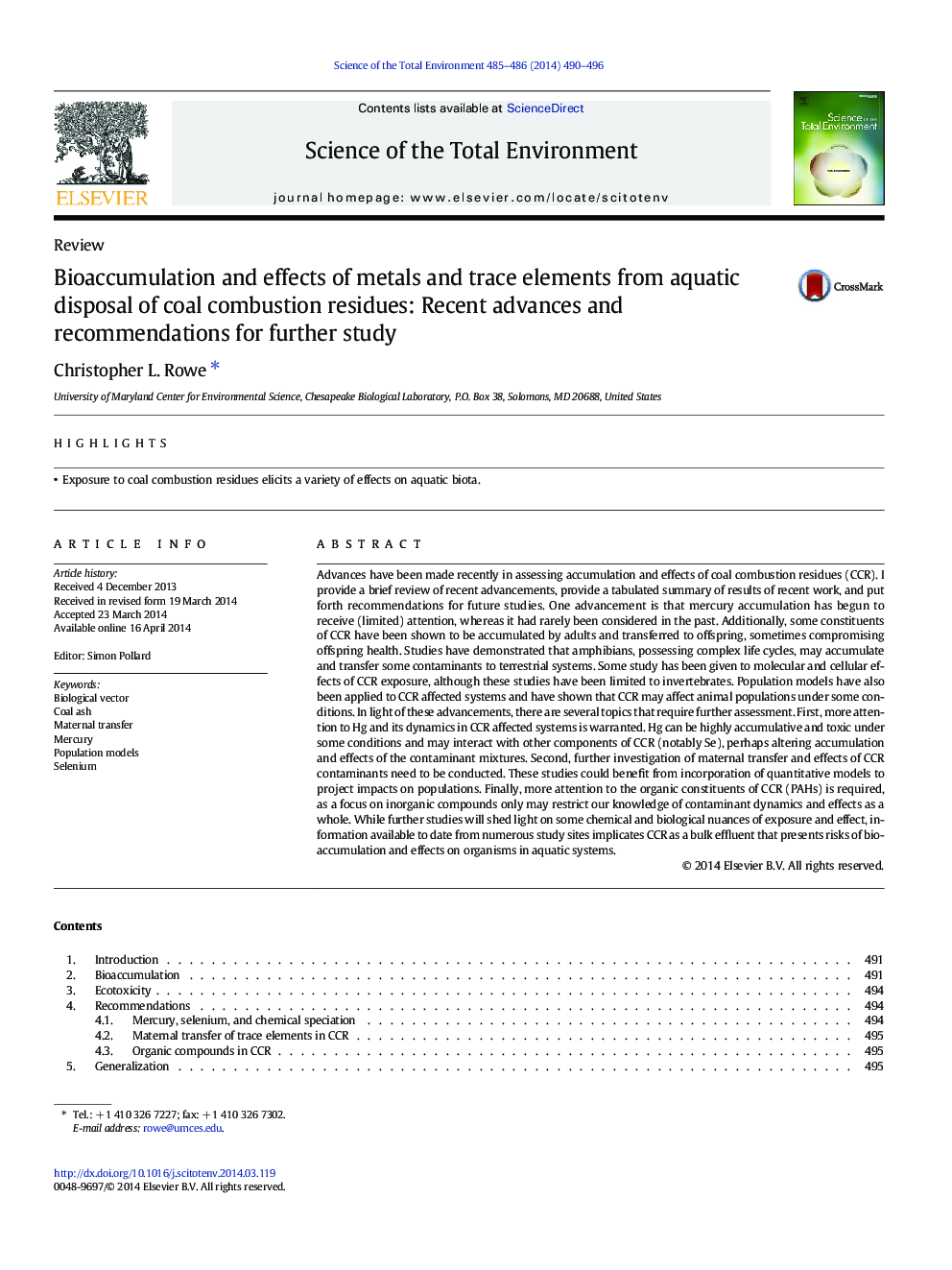| کد مقاله | کد نشریه | سال انتشار | مقاله انگلیسی | نسخه تمام متن |
|---|---|---|---|---|
| 6330458 | 1619783 | 2014 | 7 صفحه PDF | دانلود رایگان |
عنوان انگلیسی مقاله ISI
Bioaccumulation and effects of metals and trace elements from aquatic disposal of coal combustion residues: Recent advances and recommendations for further study
ترجمه فارسی عنوان
ذخیره سازی بیولوژیکی و اثرات فلزات و عناصر کمیاب از دفع آبی موجودات باقیمانده احتراق زغال سنگ: پیشرفت ها و توصیه های اخیر برای مطالعه بیشتر
دانلود مقاله + سفارش ترجمه
دانلود مقاله ISI انگلیسی
رایگان برای ایرانیان
کلمات کلیدی
بردار بیولوژیک، خاکستر زغال سنگ، انتقال مادران، جیوه، مدل های جمعیتی، سلنیوم،
موضوعات مرتبط
علوم زیستی و بیوفناوری
علوم محیط زیست
شیمی زیست محیطی
چکیده انگلیسی
Advances have been made recently in assessing accumulation and effects of coal combustion residues (CCR). I provide a brief review of recent advancements, provide a tabulated summary of results of recent work, and put forth recommendations for future studies. One advancement is that mercury accumulation has begun to receive (limited) attention, whereas it had rarely been considered in the past. Additionally, some constituents of CCR have been shown to be accumulated by adults and transferred to offspring, sometimes compromising offspring health. Studies have demonstrated that amphibians, possessing complex life cycles, may accumulate and transfer some contaminants to terrestrial systems. Some study has been given to molecular and cellular effects of CCR exposure, although these studies have been limited to invertebrates. Population models have also been applied to CCR affected systems and have shown that CCR may affect animal populations under some conditions. In light of these advancements, there are several topics that require further assessment. First, more attention to Hg and its dynamics in CCR affected systems is warranted. Hg can be highly accumulative and toxic under some conditions and may interact with other components of CCR (notably Se), perhaps altering accumulation and effects of the contaminant mixtures. Second, further investigation of maternal transfer and effects of CCR contaminants need to be conducted. These studies could benefit from incorporation of quantitative models to project impacts on populations. Finally, more attention to the organic constituents of CCR (PAHs) is required, as a focus on inorganic compounds only may restrict our knowledge of contaminant dynamics and effects as a whole. While further studies will shed light on some chemical and biological nuances of exposure and effect, information available to date from numerous study sites implicates CCR as a bulk effluent that presents risks of bioaccumulation and effects on organisms in aquatic systems.
ناشر
Database: Elsevier - ScienceDirect (ساینس دایرکت)
Journal: Science of The Total Environment - Volumes 485â486, 1 July 2014, Pages 490-496
Journal: Science of The Total Environment - Volumes 485â486, 1 July 2014, Pages 490-496
نویسندگان
Christopher L. Rowe,
